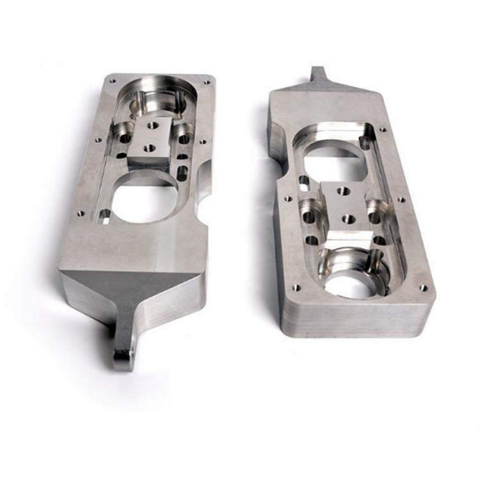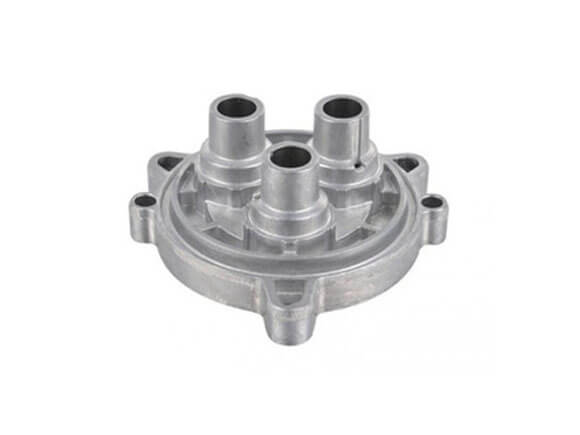Aluminum Casting Techniques: a Deep Dive Into Products and Approaches for Success
Aluminum casting methods play an essential function in production. Numerous methods exist, each suited to different applications and demands. Sand casting is preferred for larger parts, while die casting is recognized for its precision in high-volume manufacturing. Financial investment casting supplies thorough layouts with superior finishes. Understanding these differences can greatly impact task end results. Aluminum Casting Company. Picking the suitable method is not always uncomplicated, leading to crucial considerations that must be discovered further.
Comprehending Aluminum Casting: A Review
Aluminum casting is an important manufacturing process utilized across numerous sectors to develop detailed parts with high precision. This method involves putting liquified aluminum into a mold and mildew, enabling it to take the form and strengthen of the preferred part. The versatility of aluminum, incorporated with its corrosion-resistant and light-weight residential properties, makes it an ideal choice for applications in auto, aerospace, and durable goods.
Various casting strategies exist, each suited to details needs and job scales. Elements such as mold materials, cooling down prices, and the complexity of the design play a considerable duty in determining one of the most efficient approach. Furthermore, the properties of the aluminum alloy made use of can influence the end product's surface area, strength, and resilience finish.
Recognizing the basics of aluminum casting makes it possible for suppliers to optimize production processes, decrease waste, and assurance top notch result, which is important in today's open market.
Sand Casting: Methods and Applications
Among the numerous techniques made use of in aluminum casting, sand casting sticks out due to its versatility and cost-effectiveness. This approach involves creating a mold and mildew from a mix of sand and binder, which can be formed to fit complex styles. When the mold and mildew is prepared, liquified aluminum is put right into it, enabling complex functions and information to be recorded.
Sand casting is especially beneficial for generating huge components and low-volume production runs, making it optimal for vehicle elements, machinery components, and imaginative sculptures. The method also suits a variety of aluminum alloys, improving its convenience in numerous applications. Additionally, using sand as a mold material permits very easy recovery and reuse, adding to ecologically sustainable methods. Nonetheless, achieving high dimensional accuracy can provide difficulties, demanding experienced craftsmanship and cautious control of the casting procedure. On the whole, sand casting stays an essential approach in aluminum factories worldwide.
Die Casting: Precision and Efficiency
Die casting is an extremely efficient technique of generating aluminum elements with extraordinary dimensional precision and surface finish. This procedure includes forcing molten aluminum into a specifically machined mold under high pressure, which permits elaborate designs and minimal product waste. The quick cooling of the alloy within the mold and mildew results in a strengthened part that frequently requires little to no added machining.
Die casting is especially beneficial for high-volume production runs, where consistency and rate are vital. It supports the creation of complicated geometries, making it suitable for various applications, consisting of vehicle, aerospace, and durable goods.
The procedure can fit numerous aluminum alloys, improving the mechanical residential or commercial properties of the ended up products. With its capability to create light-weight yet durable elements, die casting sticks out as a recommended strategy in modern-day production, browse around here supplying both precision and efficiency in aluminum casting.
Investment Casting: Detail and Complexity
Investment casting, likewise called lost-wax casting, is a precise and versatile technique for generating complicated aluminum elements. This method is especially valued for its ability to produce elaborate geometries and fine information that are commonly unattainable with other casting techniques. The procedure starts with a wax pattern, which is coated in a ceramic covering. As soon as the shell hardens, the wax is dissolved, leaving an in-depth mold and mildew for aluminum putting.
The advantages of financial investment casting include remarkable surface finish and dimensional accuracy, minimizing the need for extensive machining later. It is specifically helpful for little to medium production runs where precision is crucial. This method suits different aluminum alloys, enhancing its applicability throughout markets. Aluminum Foundry. Inevitably, financial investment casting sticks out for its capacity to supply both aesthetic allure and practical performance in aluminum parts, making it a favored choice for designers and developers looking for complicated solutions

Selecting the Right Technique for Your Project
Exactly how can one establish the most appropriate aluminum casting approach for a certain task? The selection process pivots on several important variables, consisting of the intricacy of the design, the preferred surface area coating, and Precision aluminum casting manufacturing quantity requirements. For detailed styles, investment casting commonly shows useful because of its capability to capture great details. On the other hand, sand casting may be liked for larger, less complicated parts, using cost-efficiency and flexibility in manufacturing.
Factors to consider concerning tolerances and mechanical residential or commercial properties of the last product are important. For high-performance elements, die casting might be the very best choice, as it offers premium dimensional accuracy and surface area quality. Furthermore, comprehending the material homes and compatibility with the selected technique is very important for guaranteeing the success of the task. Ultimately, an extensive assessment of these elements will lead the decision-making procedure, leading to the most reliable aluminum casting technique for the particular project at hand.
Regularly Asked Concerns
What Is the Environmental Influence of Aluminum Casting Methods?

Just How Can I Enhance the Surface End Up of Cast Aluminum?
To enhance the surface coating of cast aluminum, one can make use of methods such as sandblasting, polishing, and using finishes. Appropriate mold style and temperature level control likewise substantially improve the last surface area high quality of the actors item.
What Safety and security Safety Measures Should Be Taken Throughout Aluminum Casting?
During aluminum casting, essential safety and security preventative measures consist of wearing safety gear, guaranteeing correct air flow, making use of fire-resistant materials, keeping a risk-free distance from molten steel, and adhering to tools security procedures to stop injuries and accidents.
Just how Do I Fix Usual Casting Defects?
To fix usual casting defects, one need to evaluate the mold for damage, examine the alloy structure, check pouring temperature, adjust cooling rates, and guarantee proper venting to minimize air browse around this web-site entrapment and improve casting quality.
What Are the Costs Connected With Different Aluminum Casting Techniques?
The prices associated with various aluminum casting techniques differ substantially, affected by variables such as product costs, production, tools, and labor range. Spending plan factors to consider are vital for selecting one of the most suitable casting method for specific tasks.
Sand casting is preferred for bigger elements, while die casting is known for its precision in high-volume manufacturing. Amongst the different strategies made use of in aluminum casting, sand casting stands out due to its versatility and cost-effectiveness. Die casting is an extremely efficient method of producing aluminum parts with exceptional dimensional accuracy and surface area coating. Financial investment casting, also known as lost-wax casting, is a exact and flexible method for generating complicated aluminum components. How can one determine the most ideal aluminum casting technique for a details project?